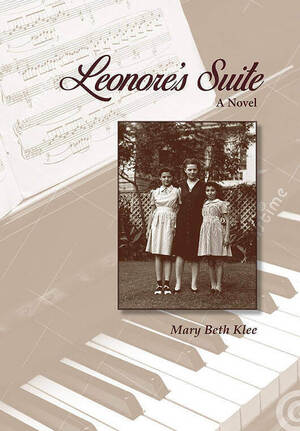It is a remarkable story, and one that may have been lost to time had it not been for a daughter’s extraordinary retelling.
Leonore Agnes Iserson was 13 and living in Manila when the Japanese bombed Pearl Harbor on December 7, 1941, igniting World War II. She and her family were among the 10,000 Americans living in the Philippines, a U.S. territory, when General Douglas MacArthur pulled his troops out of the city two weeks later, leaving thousands of American civilians in the hands of the Japanese.

Leonore would spend the next 37 months of her life at the Santo Tomas Internment Camp as part of the largest enemy internment of American civilians in U.S. history, with some 4,000 held prisoner there during the war. She would lose her freedom and her father and endure starvation, disease and cruelty. The camp would serve as her home, school, theater, church and prison — her world — as she came of age, indelibly marked by both the severity and small pleasures she found there.
Leonore would survive, return to the States by ship in 1945 and graduate from Saint Mary’s College in 1950, marry Richard Francis Klee ’50, and send five children and nine grandchildren to Notre Dame or Saint Mary’s.
The book’s author, her daughter, Mary Beth Klee ’75, listened to her mother’s stories, grasped their importance and urged her to write them down. A librarian, Lee Iserson Klee compiled notes from talks she had given and in her retirement went to work on a memoir. She died suddenly in 1996, leaving the unfinished work to her daughter.
Mary Beth Klee was qualified. With a doctorate in history and several history texts to her credit, she composed Leonore’s Suite, a historical novel, as her first work of fiction. It is an impressive narrative that skillfully weaves historical fact with engaging storytelling.
Given Klee’s career, it is not surprising that the book offers solid, detailed historical underpinnings, that the unfolding events of the war — and its approaching conclusion — thread throughout the narrative, affecting the characters’ thinking and the book’s dramatic currents. But the storytelling is also capably handled, making it all the more personal. The blend of history and human makes for a good read.
The title, Leonore’s Suite, could at first be interpreted as Lee’s story told in movements over time. But it is more than that. Leonore’s Suite is a musical composition written specifically for her by her Russian-Jewish father. It binds her not only to him but also to a Japanese guard and a U.S. Marine.
In one of the book’s most poignant moments, the Japanese guard, Corporal Haruo Tanaka, plays the suite from memory, not sheet music.
"Rippling chords cascaded into a haunting melody that surged and flowed effortlessly under Haruo’s sure hands,” Leonore says, watching and listening, enthralled. “His fingers caressed the keys and moved lightly along the ivory reaches, the melancholy melody mounting explosively. I remembered watching Daddy play this part, his left hand undulating rhythmically, while his right worked apparently unrelated magic of its own. Here was Haruo doing the same thing, until the piece unexpectedly erupted, and lyrical silver notes sprang from the upper reaches of the keyboard. The music itself took flight. I closed my eyes, and the clenched black knot of fear that I had carried deep inside me for three years quietly loosened and slipped.
“It seemed like my whole being floated free of this dirty, overcrowded camp.”
Just as the music lifts the narrator’s spirit, providing the hint and hope of the transcendent in a world closed in, so does Leonore Iserson Klee’s spirit invade this novel as a reminder of humanity persevering and rising above brutal and confining circumstances. Her life made for a remarkable story, and it is well told by her daughter.
Kerry Temple ’74 is editor of this magazine.